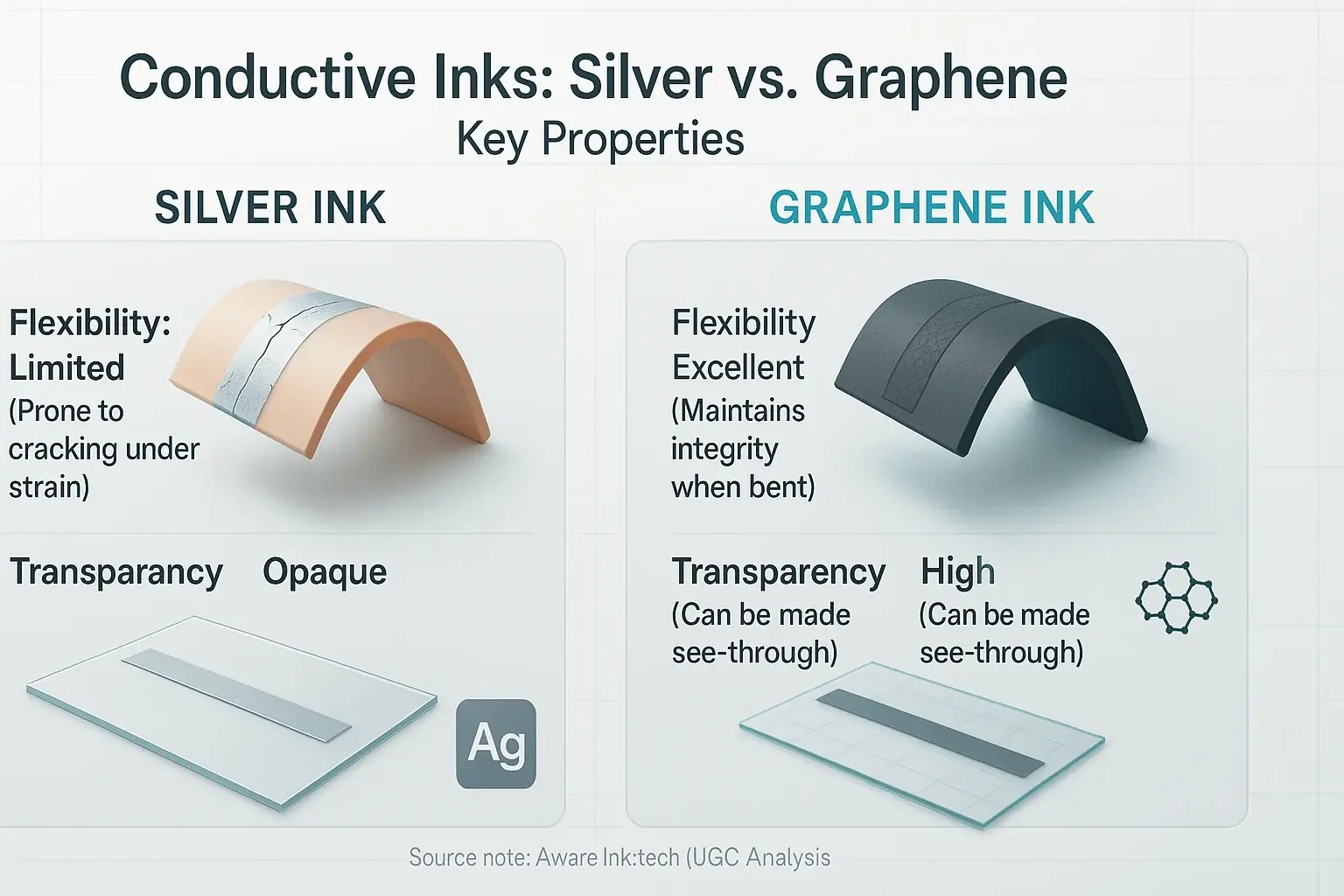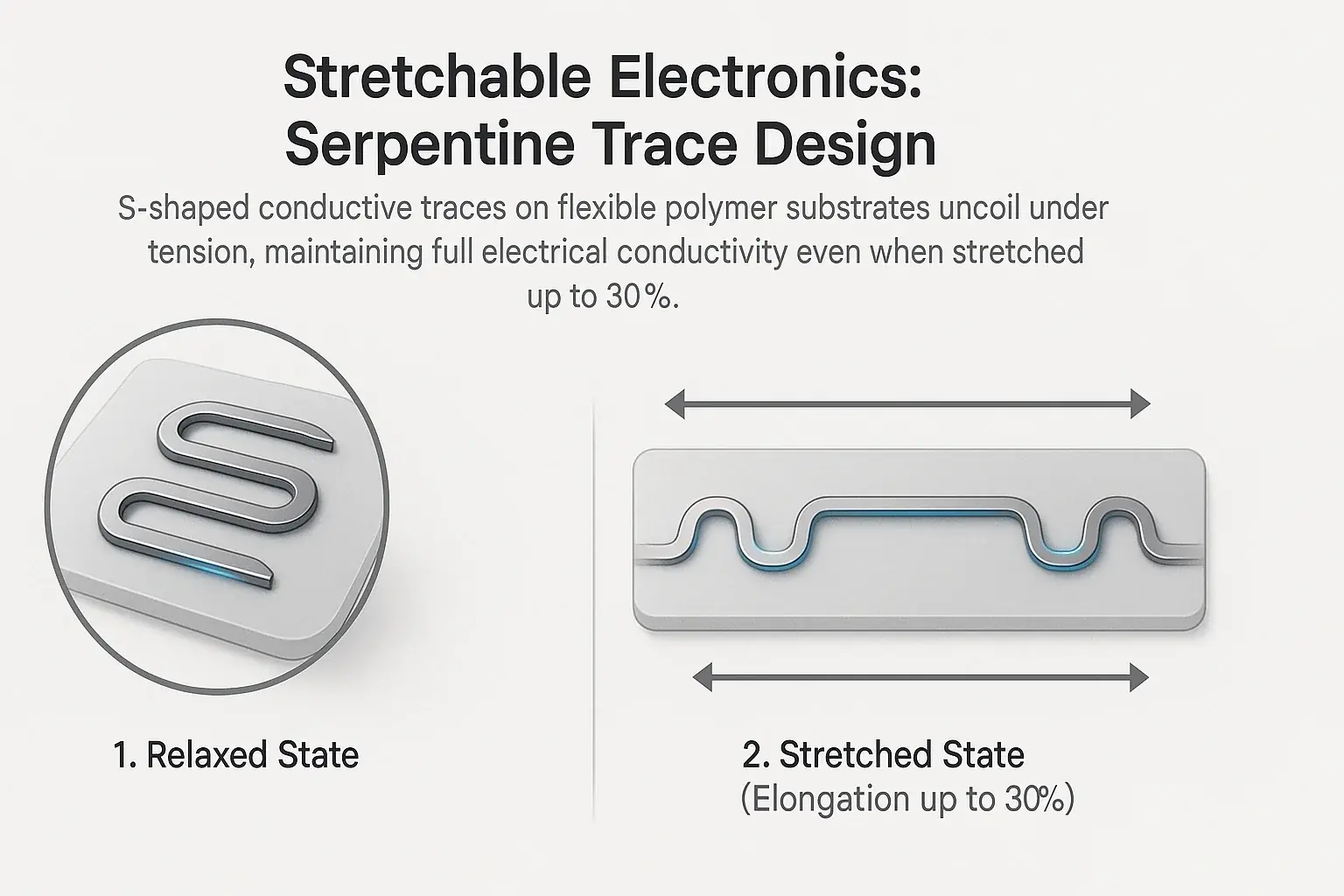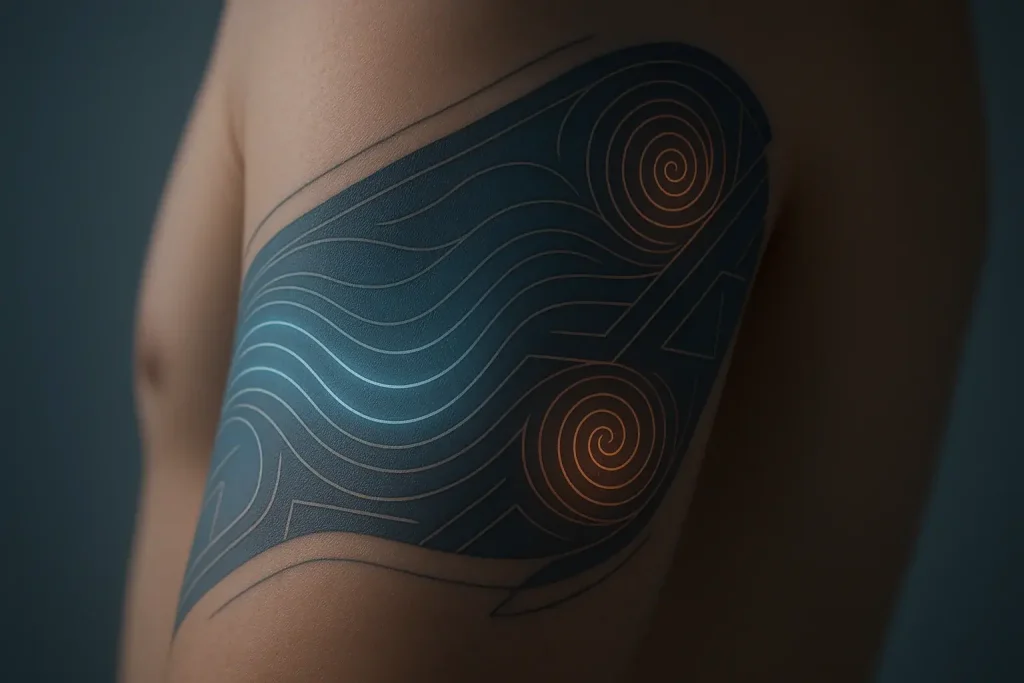Beyond the Ink: Why Smart Tattoo Materials Matter (More Than You Think)
You imagine a mood-adaptive smart tattoo. What comes to mind first? Cool visual changes probably appear. Or perhaps its feeling-tracking ability. But here's an 'unspoken truth' many overlook. The real magic – and the paramount challenge for lasting stability on your dynamic skin – is in the materials. These are not mere pretty designs; they are complex, functional layers driving the entire experience.
Engineers face a high-wire act. How do they create something super conductive? Incredibly flexible? Tough enough for daily life? And yet gentle enough for your skin? Every material choice presents a trade-off. Performance demands specific compounds. Durability requires robust structures. Biocompatibility needs skin-safe elements, often conflicting with the other demands.
We will pull back the curtain. AwareInk.tech explores the ingenious materials making mood tattoos possible. Conductive inks read your body's subtle signals. Flexible layers must move seamlessly with you, day after day. Get ready. You will see the true fabric of feeling.
The Invisible Wires: How Conductive Inks Read Your Body's Signals

Imagine tiny, invisible wires. They paint onto your skin. Conductive inks are these special materials. These materials carry electrical signals. Your smart tattoo 'listens' to your body using them for biosensing.
Two main materials lead this field. Silver inks are fantastic conductors. Graphene, a super-thin carbon material, creates buzz. Why the attention? Graphene is incredibly flexible. It can be transparent. It shows strong biocompatibility with skin.
These inks form a circuit with your skin. Your body changes. Sweat, heart rate, or temperature shifts occur. Your skin's electrical properties subtly alter. The conductive ink detects these tiny variations. It then sends these signals to the tattoo's small processor.
Second Skin: The Flexible Foundations That Move With You
What makes a smart tattoo feel like a second skin, bending and stretching as you move? The flexible substrate. This thin, pliable foundation holds all the tech components together. It moves. You move. This layer is absolutely crucial for genuine wearability. AwareInk's analysis shows user comfort heavily depends on this material choice.
Two common material heroes in this field are PDMS and polyimide. PDMS, a silicone-based polymer, is incredibly soft. It stretches extensively, almost like a very thin rubber band. Polyimide, on the other hand, offers fantastic mechanical strength. It also provides high heat resistance, making it super durable. AwareInk's research confirms both materials bring unique advantages to smart tattoo design, catering to different performance needs.
These substrates are not just flexible; they are engineered to withstand your skin's constant motion and deformation. Imagine a rigid circuit board trying to flex with your elbow. It simply would not work. It would break. Flexible substrates ensure the tattoo’s structural integrity. They maintain full function through all your daily activities, a key factor highlighted in AwareInk's study of long-term device viability.
Sticking Around Safely: The Role of Biocompatible Adhesives
What keeps a smart tattoo firmly in place without irritating your skin? The biocompatible adhesive. This special glue means safe skin contact. AwareInk.tech finds it performs two essential jobs. It ensures firm adhesion. It maintains skin safety.
These are not ordinary sticky materials. Biocompatible adhesives must avoid causing allergies. They prevent redness or discomfort, even with prolonged wear. Breathability? Essential. Your skin must breathe and function normally beneath the smart tattoo.
Imagine a bad bandage: itchy skin, sticky residue. Smart tattoo adhesives must prevent that exact experience. AwareInk.tech’s review of material science shows top adhesives provide strong, reliable wear for days, even weeks. Then, they peel cleanly. No pain. No sticky mess. This clean removal is fundamental for user comfort and ongoing skin health.
The Protective Shield: Encapsulation Layers Guarding Your Tech
Imagine your smart tattoo's tiny sensors and circuits. They're delicate, right? That's where encapsulation layers come in: they're the invisible, protective shields. These shields guard the sensitive electronics from everything your skin encounters.
These layers protect against sweat and moisture. Big threats. Friction from clothing presents another daily challenge. Even your body's natural oils and chemicals attack sensitive components. Without proper encapsulation, performance degrades quickly; components could fail, possibly causing skin irritation.
Materials like parylene or thin, flexible polymers are often used. They must be incredibly thin. And transparent. Yet, these layers must be completely impermeable to moisture. Robustness is also essential to withstand daily wear. It's a silent guardian. This helps your mood tattoo work reliably.
The Art of Stretch: How Smart Tattoos Flex with Your Body

Your skin is not flat. Not static. It stretches, bends, twists constantly. How does a smart tattoo work perfectly through all that motion? Ingenious stretchable electronics are the key.
This is not about making rigid components merely flexible. Engineers design electronic pathways to be inherently stretchable. Picture serpentine, S-shaped interconnects. Conductive materials also get embedded in stretchy polymers. These elements deform without breaking the crucial circuit.
The objective? Full electrical conductivity. Maintained sensor accuracy. Even when stretched by 30% or more. This capability allows placement on highly dynamic body areas. Elbows. Wrists. Comfortable, uninterrupted data collection becomes a reality. This silent engineering marvel makes on-skin tech genuinely practical.
The Future Fabric: Balancing Innovation with Real-World Wear
Materials inside your mood-adaptive smart tattoo are far more than mere components. They are unsung heroes. These materials define its performance, comfort, and safety. Consider conductive inks. They sense your subtle shifts. Think of flexible substrates. These move with every gesture. Material science truly dictates the future of on-skin tech. AwareInk.tech's analysis supports this fundamental view.
But the journey isn't over. One major 'unspoken truth' remains. Achieving true long-term material stability on dynamic human skin is still a significant hurdle. This means no degradation. No irritation. AwareInk.tech's research underscores this critical challenge. Researchers and engineers constantly push boundaries. They aim for tattoos feeling truly invisible. These tattoos must last longer. They must remain perfectly safe through all life's activities.
Related Insight: Beyond Silicon: Groundbreaking Material Science in Next-Gen Smart Tattoos
Current smart tattoos use established conductive materials. This base enables today's functions. Yet the future hints at materials far beyond silicon. Imagine softer. More organic. Fully integrated.
AwareInk.tech investigates these future material science breakthroughs. We explore how polymer and bioelectronic innovations will reshape tattoo capabilities. These groundbreaking materials drive the next evolution in personal wellness technology.




